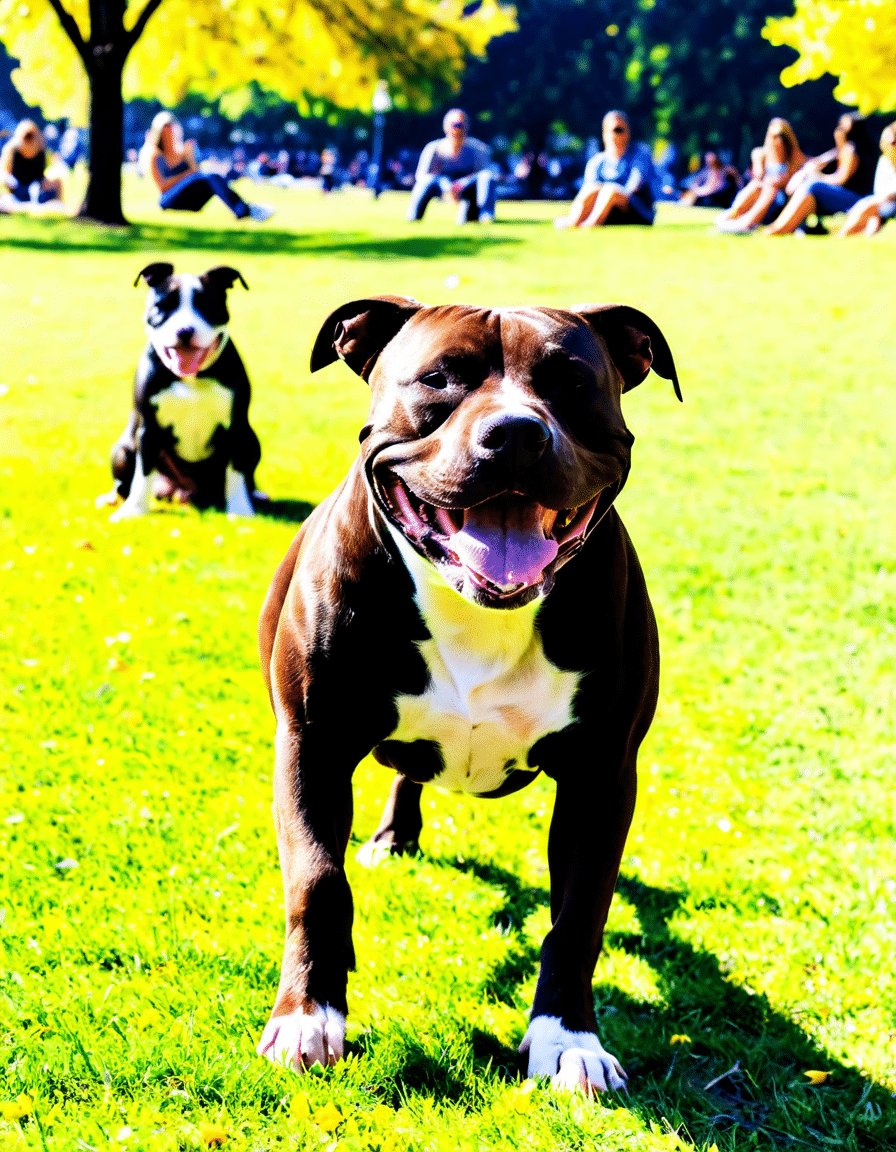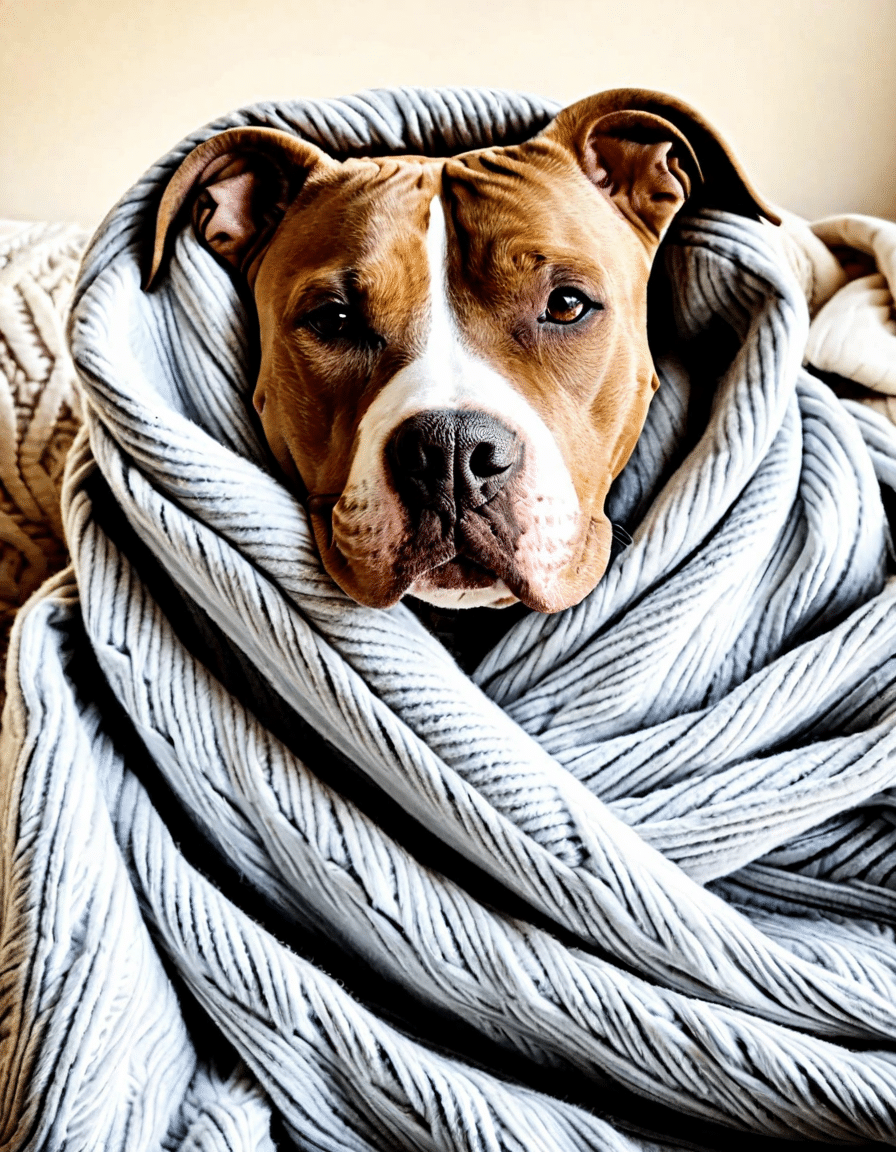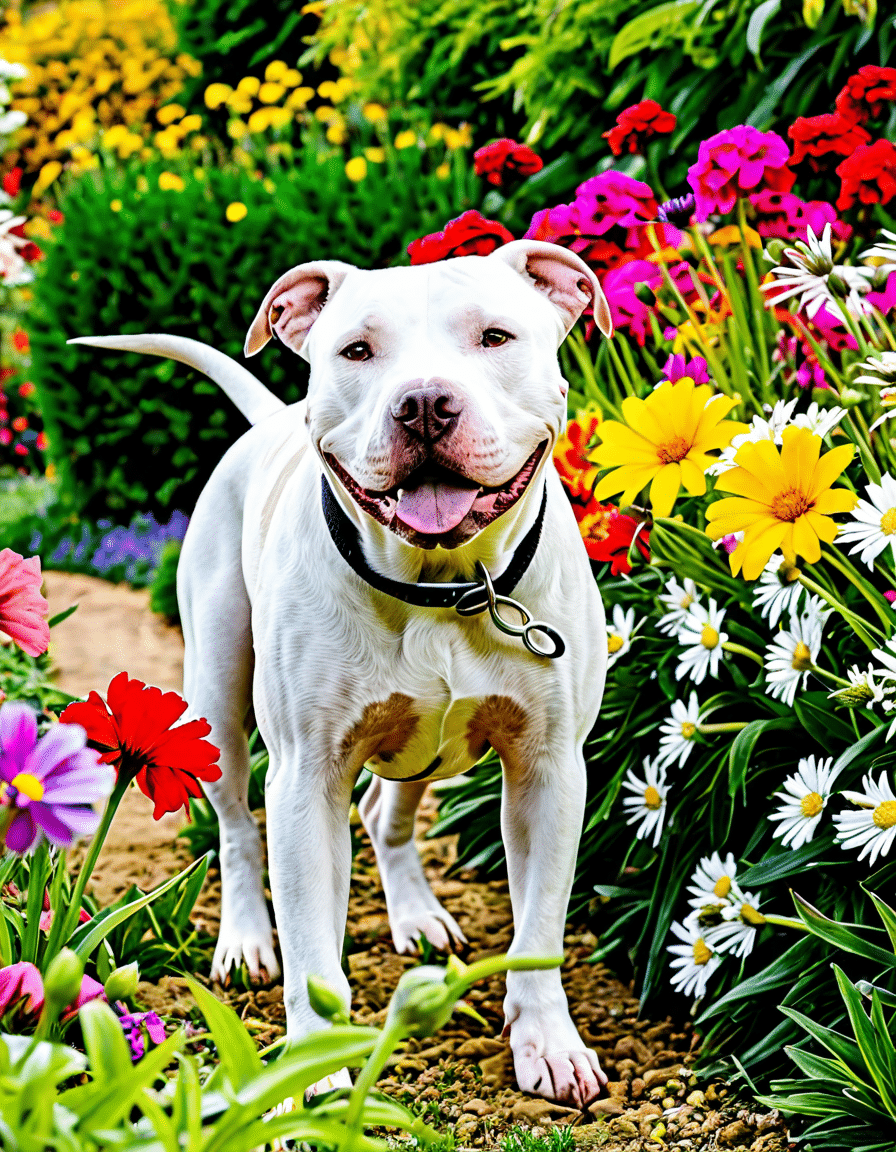As a beloved breed for many dog owners, understanding pitbull aging is crucial for ensuring a happy and fulfilling life. Aging in a pitbull can bring some marked changes in personality, health, and even appearance, so having the right knowledge can truly make a world of difference. With the right approach, you can help your furry friend navigate their senior years gracefully. Let’s explore the seven essential secrets to help your aging pitbull thrive.
7 Essential Secrets to Help Your Aging Pitbull Thrive

1. Balanced Nutrition for Optimal Aging
A balanced diet plays a crucial role as your pitbull starts to age. Senior pitbulls often need lower-calorie, nutrient-dense foods to maintain a healthy weight and avoid obesity, which can harm their joints. Brands like Royal Canin or Hill’s Science Diet offer specific formulas crafted for senior dogs, often enriched with omega fatty acids. These nutrients promote a healthy coat and skin, addressing the changes in pitbull hair texture and thickness that come with age.
When selecting your pitbull’s food, look for formulas that cater to their unique needs. These may include added joint supplements like glucosamine and chondroitin, essential for maintaining mobility. Look out for ingredient lists that prioritize whole food sources and avoid fillers, as these can lead to unnecessary weight gain.
2. Regular Veterinary Checkups
Routine veterinary visits become even more important as your pitbull ages. Just like humans, dogs can develop various health issues as they grow older. Regular checkups help catch common senior concerns like arthritis or heart disease early on. Asking your vet about vaccinations and screening tests specifically tailored for older pets is a great way to keep your grey pitbull in optimal health.
Between vet visits, keep close tabs on any changes in behavior or physical health. For instance, if you notice your pitbull seems more tired than usual or struggles to get up from a resting position, these could be signs of ongoing health issues. Make sure to discuss these observations with your veterinarian, as they can guide how to best support your furry friend’s health.
3. Gentle Exercise Routines
As your pitbull ages, their energy levels may decline, but that doesn’t mean they don’t need exercise. Gentle, low-impact physical activity is essential for maintaining muscle mass and keeping their joints healthy. Activities such as short walks or gentle play sessions can provide a balance of physical health and mental stimulation.
Aim for at least 20-30 minutes of exercise each day, but make sure the activities are tailored to your pitbull’s current fitness level. Swimming is also a great option, as it puts less strain on their joints while allowing for a full-body workout. Be sure to watch for signs of fatigue, and adjust the exercise routine as needed.
4. Caring for Your Pitbull’s Coat
With age, your pitbull’s coat may require a little extra tender loving care. You might notice changes in pitbull hair quality or an increase in shedding patterns as they mature. Regular brushing can help prevent matting, reduce shedding, and keep your dog’s skin healthy.
Grooming products like the FURminator or Pet Neat Pet Grooming Brush can work wonders, maintaining not only their sleek appearance but also their overall health. Clean, well-maintained fur can help in spotting any skin issues early on, which is key for an aging dog. Establishing a steady grooming routine can also be a good bonding experience.
5. Weight Management Strategies
Aging pitbulls can easily become fat pitbulls, which leads to a host of health issues. Monitoring their weight is vital for maintaining their health as they age. Simple strategies like portion control and measuring food can go a long way in preventing unwanted weight gain.
Consulting with a veterinarian about tailored dietary plans, including calorie recommendations based on their activity level, can help you efficiently manage their weight. You might also want to introduce low-calorie treats for training and rewarding, ensuring they still feel loved without the added calories.
6. Emotional Support and Social Interaction
Just like people, aging can affect your pitbull’s emotions and behavior. Providing a stable environment, engaging in consistent playtime, and ensuring social interactions with other dogs and humans are vital for their emotional well-being. Enrichment activities such as puzzle toys or gentle training sessions stimulate their minds and keep anxiety at bay.
Creating a comfortable space in your home where your pitbull can relax while still being part of the family is essential. Regular interaction, whether through play or simply laying together on the couch, reinforces that they’re still loved and cherished, regardless of their age.
7. Fashion for Functionality
If you love to dress up your pets, pitbull clothing can significantly enhance their comfort, especially as they age. Consider brands like PetFusion or Pawtitas, which offer jackets and sweaters designed for warmth and mobility. Older dogs may feel colder than they did in their youth, so ensuring they have cozy garments helps with their overall comfort.
Look for clothing options that are easy to put on and take off, such as those with adjustable features. Ensuring your pitbull can move freely while staying warm is essential, and having them stylishly dressed can add a little fun to their daily routine.
The Beauty of Pitbull Colors and Aging Gracefully
Aging brings its own brand of beauty, especially in your pitbull. As your furry friend matures, unique traits such as pitbull colors and variations—like the stunning blue pitbull or elegant gray coats—become even more pronounced. You may start to notice subtle changes in their features as they grow older, inviting you to capture their essence through photography.
Embracing these changes can turn aging into a beautiful experience. Consider documenting these moments through pictures, creating lasting memories that highlight their journey. Your aging pitbull will surely appreciate the extra love, and you’ll cherish the time spent together.

Finding Joy in the Aging Process
Caring for an aging pitbull is a meaningful journey filled with responsibilities and love. Understanding the physical and emotional needs of your furry friend ensures they enjoy their senior years with vitality and grace. Each moment shared deepens the bond you share, highlighting compassion, commitment, and joy in every wagging tail.
Embrace these secrets of pitbull aging, and savor the memories created together. Giving your pitbull the tender care they deserve is the perfect way to celebrate this beautiful season of life, filled with love, loyalty, and unforgettable moments.
In this way, you can ensure your aging pitbull lives their golden years happily, making your life richer in the process. Whether it’s through tailored nutrition, gentle exercise routines, or simply a warm sweater on chilly evenings, your attentiveness can sculpt a loving, supportive environment for your cherished companion to thrive.
Pitbull Aging: Fun Trivia and Interesting Facts
Fun Insights into Pitbull Aging
Did you know that just like humans, pitbulls go through a variety of aging stages? Puppies, adults, and seniors all have different needs! For instance, during the senior years, a pitbull often requires a diet lower in calories to keep their weight in check. Speaking of dietary needs, just as certain foods can influence human health, a pitbull’s diet plays a critical role in their aging process. It’s comparable to horse gestation, where proper nutrition can lead to healthier outcomes. That’s why it’s so important to provide your furry friend with the right nutrients as they grow older.
While many pitbulls can live to be around 12-15 years old, some can surprise you! Just like humans, they can have unique traits and quirks that emerge as they age—some may even remind you of a beloved character from a silly show like My New boss Is Goofy. Interestingly enough, regular exercise can increase their lifespan, making everyday walks as beneficial as a comfy pair of brown Ugg Boots for your feet! Creating a routine that includes fun activities not only helps your pitbull stay fit but also strengthens the bond you share.
Aging can bring about certain health challenges, too. For example, your pitbull might develop joint issues or become less active, similar to the experiences of athletes like Darryl Stingley, whose resilience is inspiring. Brushing your pitbull’s teeth and checking their ears becomes essential, particularly as they get older. Just think of it as ensuring your pup doesn’t have the same kind of health issues that can arise in humans, like a low bone density issue—much like how chicken tibia bones can be a concern for certain animals.
As we continue our journey through pitbull aging, remember that each age group has its joys and challenges. While some may feel the need to ‘take a nap sometime today’ as the day wears on, others remain spirited with endless energy! It’s all about recognizing those changes and adapting their care routines accordingly. So whether your pitbull is enjoying a lazy afternoon or gearing up for an adventure, their golden years can certainly be filled with happiness and health.



